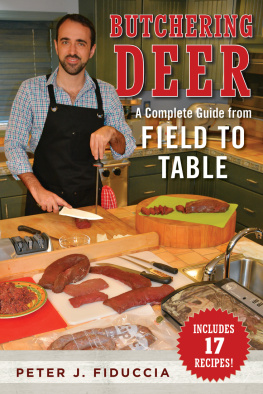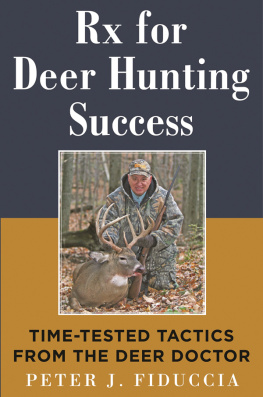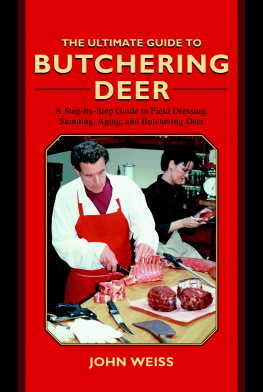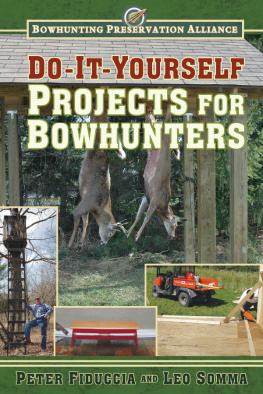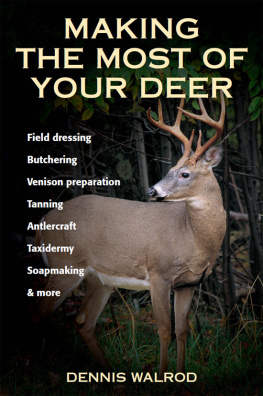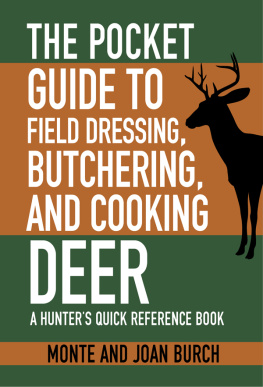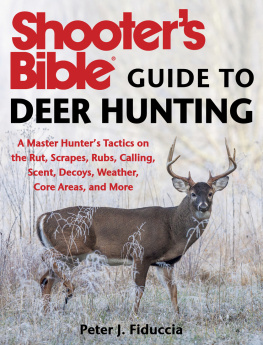


Copyright 2018 by Peter J. Fiduccia
All rights reserved. No part of this book may be reproduced in any manner without the express written consent of the publisher, except in the case of brief excerpts in critical reviews or articles. All inquiries should be addressed to Skyhorse Publishing, 307 West 36th Street, 11th Floor, New York, NY 10018.
Skyhorse Publishing books may be purchased in bulk at special discounts for sales promotion, corporate gifts, fund-raising, or educational purposes. Special editions can also be created to specifications. For details, contact the Special Sales Department, Skyhorse Publishing, 307 West 36th Street, 11th Floor, New York, NY 10018 or .
Skyhorse and Skyhorse Publishing are registered trademarks of Skyhorse Publishing, Inc., a Delaware corporation.
Visit our website at www.skyhorsepublishing.com.
10 9 8 7 6 5 4 3 2 1
Library of Congress Cataloging-in-Publication Data is available on file.
Cover design by Tom Lau
Cover photo credit: Fiduccia Enterprises
Print ISBN: 978-1-5107-1400-7
Ebook ISBN: 978-1-5107-1404-5
Printed in China
Dedication
_______
I dedicate this book to all hunters, the predators, who pursue wild game. They embrace the ritual instinct of the call-of-the-hunt to seek prey. No distance is too far to impede the pursuit. No weather so foul that it will bend the spirit. No obstacle is too daunting not to overcome. They hunt their game from valley to mountain top. When they encounter itthey kill it (not harvest it), stop to give thanks for it, butcher it, and eat it. In the end, the taking of wild game, the processing of the meat, and preparation and cooking of it brings them closer to nature than any conservationist, environmentalist, or preservationist can achieve and any non-hunter can even come close to understanding.

Contents
_______
PrefaceWhy
Home Butchering?
_______
An interesting aspect of learning the skills needed to butcher your own deer is that unlike a carpenter who has to throw away a piece of wood that was cut too short, a do-it-yourself butcher doesnt have to throw away a mistake. A piece of meat cut incorrectly simply ends up in another pile to be ground into burger or made into stew meat. I assure you anyone can properly learn the DIY aspects to butchering a deer or other big-game animal at home. I guarantee the skills needed to do this are not hard to acquire. With each passing year a hunters abilities will get better and the time it takes to complete this pleasurable task becomes shorter and shorter.
With all of that said, however, the most important parts of successful butchering at home include having a comfortable and clean work area to skin and quarter a deer, the right butchering tools and other equipment, a sanitary area to butcher and shrink wrap the meat, and a freezer in good working order to store the meat. Having all these things makes the task go more quickly and easily, the result being good tasting venison that can last for a long time.
By having the elements noted above, like any DIY project that someone undertakes, in the end youll assure yourself a more professional result. Therefore, before you decide to butcher your next deer, first remember that it requires an investment not only of time, but also of money. How much money will depend on just how well-equipped you want to be. The good thing about home butchering is that it can also be done on a very limited budget, with a very simple set of tools.
Most hunters dont have to home butcher their own deer. After all, there are plenty of abattoir facilities (more commonly called meat processing plants or slaughter houses) where a hunter can bring deer to get cut up and package. Today, most hunters who butcher their own deer or other big game at home do so because they want to. They enjoy the DIY aspect of cutting up their own meat.
Commercial Deer Processors
Another factor about home butchering deer is that many hunters who do it, do so because they either heard of, or have had a personal negative experience with, a commercial deer processor that ended either questionably or badly. Some of the complications hunters have encountered with processing plants include: high costs, deer hair in the meat, concerns that they have received less meat than they should have, facilities that are less than clean, inadequate packaging and labeling, and, most important, they dont know if the meat they got back was actually from their own deer.
One of the most worrisome aspects that I hear from hunters is how many of the processing plants will pile deer on top of each other either outside on the ground or on concrete floors in the plant. Both scenarios can not only contribute to unsanitary conditions leading to meat spoilage but also can lead to a crucial problem of the carcasses not being able to cool properly.
Worse yet, the concern by hunters about not getting their own deer meat back is a valid worry. Some meat processing plants (not all, but many) may lead customers to believe that the plant cuts up and processes each deer individually. In reality, most processing plants dont do that. Instead, the facility may have a routine of butchering many deer from different customers at one time. Unfortunately, this process allows them to place all similar cuts (roasts, steaks, chops, backstraps, ground and stew meat) from numerous deer into large plastic meat bins. It also means that other bins headed to the meat grinder will contain mixed meat from other deer placed into large plastic vats (tubs). The mixed meat is then dispensed and packaged into smaller portions of ground meat and given back to customers. This practice totally eliminates any possibility of a hunter getting only his or her meat back from a processing plant that employs this type of systemand some certainly do.
Furthermore, placing meat in vats and grinding it together from several deer potentially creates a more serious problem. Some of the deer killed by other hunters may not have been taken care of carefully, starting with the field-dressing stage. Or, a hunter may have allowed the deer to hang outside longer than it should have before taking it into the processing plant. Or, it may not have been handled sanitarily. These, and many other elements of how other hunters handle their deer, are all components that can lead to possible contamination problems.
Thats not all there is to be worried about when you take your deer to a processing plant. I have a family member who brought a buck into a commercial processing plant. When he went to pick up his meat and antlers, he was told that Somehow your antlers were misplaced. In the end, the antlers from his buck were never located. This is not an unusual occurrence for large deer processing facilities or even small facilities that may operate out of a garage, shed, or other building. The above incident occurred in a very large processing plant that butchers several hundred deer or more a season.
Not so surprisingly, the plant I am speaking about was under investigation by the New York State Department of Environmental Conservation (NYSDEC) for several suspected violations. One of the more flagrant violations that the plant owner was eventually charged with was not returning the right amount of meat to customers. Instead, the meat was used to make summer sausages that were sold at the plant. So, things like this do occur, and more often than they should. By the way, as of this writing this facility was fined and cannot process deer for a period of five years.
Next page
